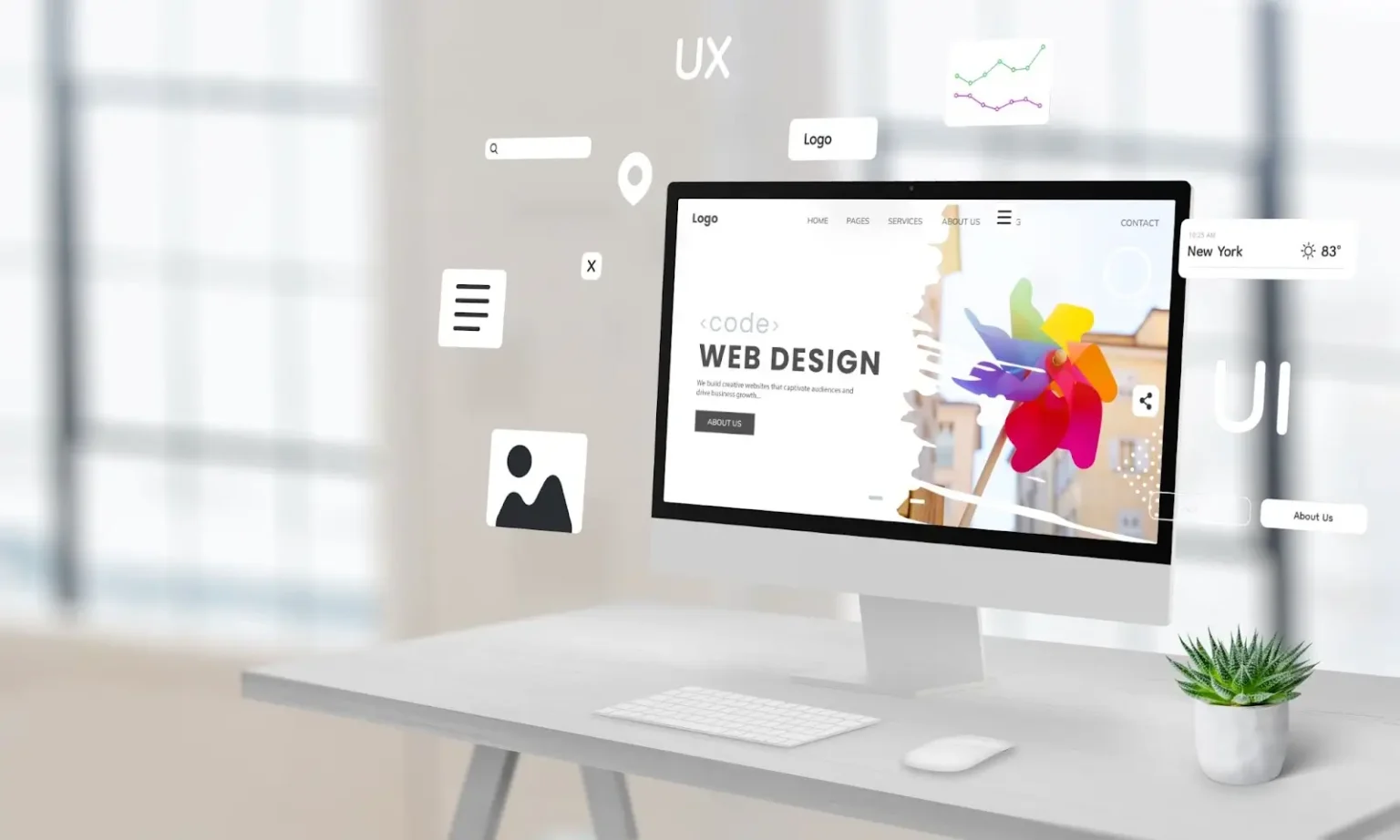Why website navigation is a important factor for any Website Design Agency project
The Significance of User Experience in Efficient Web Design Strategies
User experience (UX) works as a cornerstone in reliable web design approaches. It forms just how individuals connect with a website, affecting their complete satisfaction and likelihood of returning. A properly designed UX can improve engagement through intuitive navigation and receptive layouts. However, neglecting these facets might cause irritation and raised bounce prices. Understanding the intricacies of UX is important for developers intending to produce compelling digital experiences that resonate with varied target markets. What aspects absolutely drive successful user interaction?
Recognizing User Experience and Its Impact on Style
User experience (UX) is typically perceived as a plain aspect of web layout, it fundamentally forms exactly how users engage with a website. UX encompasses all elements of the user's communication, consisting of use, availability, and general contentment. A favorable UX cultivates involvement, urging customers to explore the site and return in the future. Conversely, a negative experience can lead to disappointment, leading to high bounce rates and shed possibilities for conversion.
Layout aspects like format, web content, and navigating company play important functions fit this experience. Effective UX layout anticipates user demands and preferences, ensuring that information is quickly accessible and aesthetically enticing. Additionally, understanding user behavior through analytics can offer important insights, notifying style decisions that improve use. Inevitably, a thorough understanding of UX allows developers to develop internet sites that not just bring in customers yet likewise promote significant interactions that align with company objectives and user assumptions.
Secret Principles of Effective User Experience
Efficient user experience rests on numerous crucial principles that enhance website capability and involvement. Instinctive navigation design, receptive design essentials, and the significance of visual power structure are crucial elements that contribute to a smooth communication in between users and web material. Recognizing these principles enables designers to develop more easily accessible and straightforward electronic environments.
Instinctive Navigating Design
When individuals come across a website, intuitive navigating style serves as a critical entrance to their total experience. Reliable navigating allows users to easily find the info they look for, enhancing their communication with the site. Trick principles include clear labeling, sensible organization, and constant positioning of navigating components. Tags ought to be simple, enabling individuals to anticipate the content they will find. A well-structured pecking order assists individuals comprehend the connection in between various sections, guiding them with the internet site effortlessly. In addition, responsive menus and quickly available links add to a fluid experience throughout tools. By prioritizing instinctive navigating, developers can substantially reduce user irritation and rise engagement, eventually promoting a favorable assumption of the website and its web content.
Responsive Layout Fundamentals
A well-structured navigation system naturally causes the requirement for a responsive layout, which is important in today's diverse digital landscape. A receptive design warranties that websites feature seamlessly throughout different gadgets, including tablets, smart devices, and desktops. This versatility enhances user experience by permitting material to be aesthetically systematic and conveniently obtainable, no matter display size. Trick principles of receptive layout include fluid grids, flexible pictures, and media queries, which promote excellent watching. Additionally, focusing on touch-friendly elements boosts communication on mobile devices. By applying a responsive layout, designers can fit users' requirements, reduce bounce prices, and increase engagement. Eventually, a well-executed responsive design promotes a favorable user experience, encouraging site visitors to explore the web site even more.
Aesthetic Pecking Order Value
Visual pecking order plays a necessary function in assisting individuals via a site, making sure that vital info catches their interest. By strategically using size, spacing, contrast, and color, designers can produce a clear pathway for individuals to adhere to. Bigger elements frequently draw the eye, suggesting their value, while contrasting shades can highlight phone call to action. Furthermore, constant positioning and collection of associated material enhance understanding, making navigation user-friendly. Efficient use visual power structure not just boosts use yet also sustains the total aesthetic of the website, cultivating a favorable user experience. When users can easily identify the most essential details, they are more probable to engage with the web content, bring about boosted satisfaction and communication with the internet site.
The Duty of Functionality in Web Design
Functionality plays a vital function in web design, specifically through navigation simplicity and adherence to ease of access requirements. Efficient navigation enhances user contentment by permitting visitors to find details quickly and with ease. At the same time, conference ease of access standards assures that all individuals, regardless of their abilities, can successfully communicate with the website.
Navigation Simpleness
Simplicity in navigation stands as a foundation of reliable web design, greatly influencing user experience. A streamlined navigation system permits users to find info swiftly and without effort, lowering aggravation and improving fulfillment. Clear labeling and sensible framework are essential elements, guiding individuals easily through the internet site. Repetitive links or excessively intricate menus can disorient users, bring about raised bounce rates. Furthermore, mobile responsiveness must be considered, guaranteeing navigating remains straightforward across devices. Focusing on vital web pages and minimizing mess even more supports user interaction. Effective navigating not only promotes a positive experience but also motivates individuals to check out the website better, inevitably leading to higher conversion rates. In this regard, navigation simplicity functions as a crucial consider the overall efficiency of web design techniques.
Access Requirements
User involvement is considerably improved when websites follow accessibility standards, ensuring that all customers, despite their capabilities, can navigate and communicate efficiently. Compliance with these standards not just expands the audience yet also boosts general user complete satisfaction. Obtainable design includes features such as message options for pictures, keyboard navigating, and sufficient shade contrast, which facilitate usage by individuals with disabilities. On top of that, executing these standards can favorably impact seo (SEARCH ENGINE OPTIMIZATION) by enhancing website framework and quality. As web design progresses, prioritizing availability ends up being vital in fostering a comprehensive electronic atmosphere. By welcoming these requirements, developers add to an extra equitable web, inevitably driving user loyalty and involvement.
Significance of Responsive Layout for User Interaction
As consumers progressively gain access to internet sites via a range of devices, the relevance of receptive layout comes to be visit their website extremely important for involving individuals efficiently. Responsive design assurances that a web site adjusts perfectly to different display sizes, providing an excellent watching experience despite the tool utilized. This adaptability enhances user interaction by facilitating simpler navigating and interaction with content.
When customers experience a website that is responsive, they are more probable to remain much longer, discover further, and return in the future. A well-designed responsive format lessens the irritation usually related to scrolling and zooming on smaller sized screens, consequently lowering bounce rates. In addition, responsive design can favorably influence online search engine positions, as online search engine prioritize mobile-friendly sites. In today's electronic landscape, where mobile use continues to increase, carrying out receptive layout is not just valuable, however vital for preserving user involvement and guaranteeing a positive experience across all gadgets.
Enhancing Load Times for Better User Fulfillment

To boost lots times, web designers should prioritize optimizing pictures, leveraging web browser caching, and lessening HTTP requests. In addition, using Web content Shipment Networks (CDNs) can quicken material delivery by distributing it across different geographical locations. Enhancing code, such as compressing CSS and JavaScript data, even more contributes to faster packing speeds.
Ultimately, a dedication to improving tons times not just enhances user contentment but additionally reinforces brand commitment and boosts the possibility of repeat brows through. A swift, seamless experience is important for retaining users and promoting positive communications.
The Impact of Visual Power Structure on User Communication
Aesthetic hierarchy read this post here functions as an essential element in guiding user communication on a web site. By arranging content in such a way that prioritizes details aesthetically, designers can influence just how customers navigate and engage with a website. This power structure is established through different design methods, including dimension, contrast, spacing, and shade. Larger fonts or strong colors attract focus to vital elements, such as telephone calls to activity or headlines, while subdued shades and smaller font styles can show subservient info.
Reliable visual power structure assists users rapidly determine what is essential, lowering cognitive load and improving use. It enables instinctive navigation, making it simpler for customers to find what they need without stress. As customers communicate with an internet site, a well-structured aesthetic pecking order cultivates a more gratifying experience, eventually causing higher interaction and conversion prices. Developers have to focus on these concepts to develop an user-centered and reliable web environment.
Gauging User Experience: Tools and Methods

Often Asked Inquiries
Exactly How Can I Improve My Internet site's User Experience on a Budget plan?
To boost a site's user experience on a spending plan, one can enhance page load rate, simplify navigation, implement responsive style, boost content quality, and gather user responses for continuous improvements, ensuring a gratifying visitor experience.
What Are Common User Experience Blunders to Stay Clear Of in Web Design?
Usual user experience mistakes in web design include messy layouts, bad navigating, slow-moving filling times, absence of mobile responsiveness, disregarding accessibility, inconsistent branding, and falling short to focus on user responses - Website Design Agency. Each can considerably prevent total website performance
Just how Commonly Should I Update My Internet Site for Better User Experience?
Internet sites need to be upgraded regularly, preferably every couple of months, to keep suitable user experience. Regular updates aid address use concerns, rejuvenate material, and adapt to changing user needs, ensuring the website remains interesting and appropriate.

Can User Experience Impact SEO Rankings on My Website?
User experience can substantially impact search engine optimization rankings, as internet search engine prioritize internet sites that use smooth navigation, fast loading times, and interesting content. A positive user experience can bring about lower bounce prices and higher search visibility.
What Duty Does Ease Of Access Play in User Experience Layout?
Accessibility plays a crucial function in user experience layout by ensuring that all individuals, no matter capabilities, can navigate and communicate with a web site effectively. This inclusivity improves total satisfaction and involvement among varied individuals.
User experience Get the facts (UX) is usually regarded as a simple aspect of internet layout, it basically shapes how individuals interact with a site. User involvement is significantly enhanced when web sites adhere to ease of access requirements, ensuring that all individuals, regardless of their capabilities, can browse and connect effectively. Measuring user experience (UX) is vital for recognizing exactly how properly a website meets the requirements of its customers. In addition, use testing, where actual customers navigate the site while viewers keep in mind difficulties, offers straight feedback on user experience. Common user experience mistakes in internet layout consist of chaotic formats, inadequate navigating, slow-moving filling times, absence of mobile responsiveness, neglecting availability, inconsistent branding, and failing to focus on user feedback.